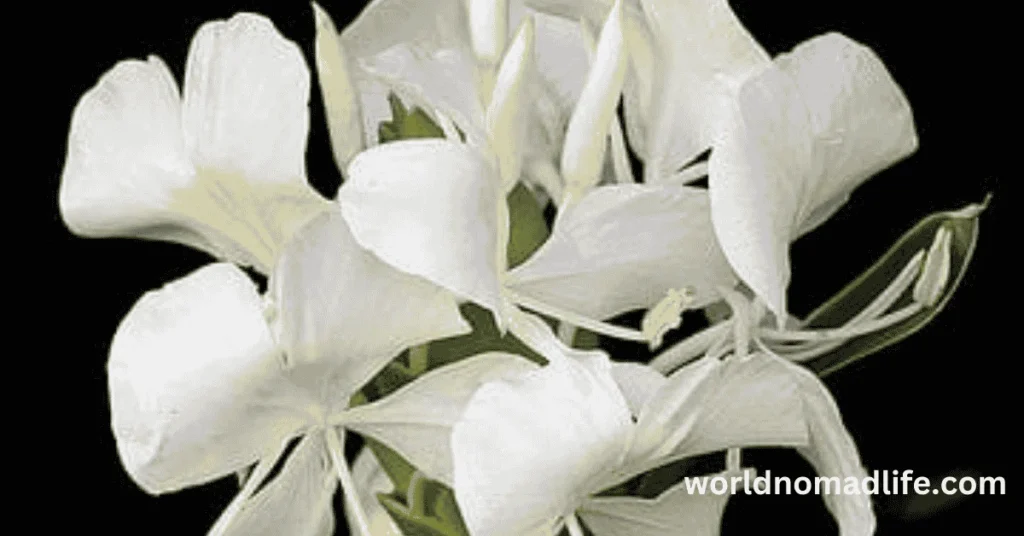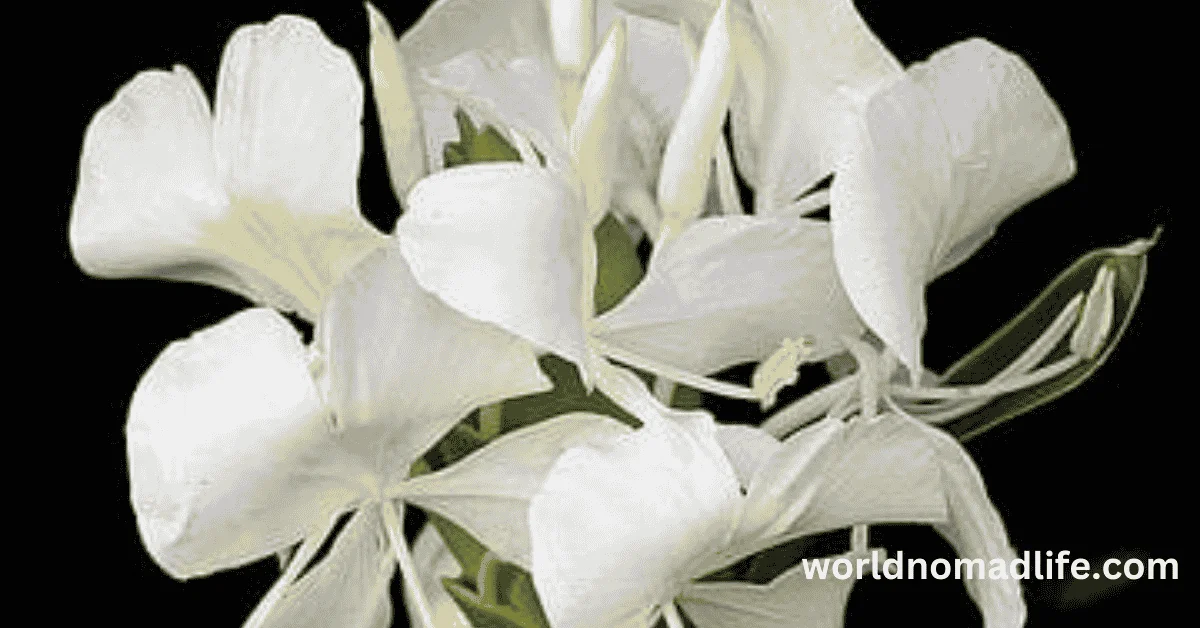In the colorful mosaic of Cuba natural beauty, a singular flower stands as a symbol of the nation spirit and resilience the mariposa. With its delicate petals that flutter like butterfly wings in the breeze, this national flower contain not only the lush landscapes of the island but also its rich history and cultural significance.
join me as I will tell you not just what this beautiful flower is but also how it embodies hope, unity, and pride for an entire nation.
What is the National Flower of Cuba?
In the beautiful scenery of Cuba, a special flower stands out: the White Mariposa, also called Butterfly Jasmine or White Ginger Lily. This flower has delicate petals and a lovely scent that charms everyone who sees it.
Its scientific name is Hedychium coronarium, which means crown like in Latin, reflecting its noble look and Cuba spirit. The White Mariposa brightens gardens and areas and is important to Cubans, symbolizing love, freedom, and strength.

Historical Significance Of The White Mariposa
National Flower Of Cuba Symbol of Resistance and Independence:
The White Mariposa, or butterfly flower, is Cuba national flower. It represents the country rich natural heritage and its strong spirit of resistance and independence. This soft flower is a symbol of the Cuban people fight against colonialism and oppression.
Its beauty hides a powerful history during important times, like the wars for independence in the late 19th century, the White Mariposa became a symbol for those seeking freedom. Its strength reflects the nation resilience, showing that fragility can exist alongside strength.
Connection to Jose Marti:
Jose Marti, a key leader in Cuba struggle against Spanish rule, is closely linked to the White Mariposa. He commonly mentioned this flower in his writings as a symbol of liberation and unity for Cubans. Marti believed that, just like the flower can thrive in tough conditions, his fellow Cubans could overcome their challenges through unity and education.
By using such symbols in his revolutionary messages, Marti inspired pride and purpose among Cubans fighting for self determination. This connection between nature and national identity still resonates today.
Cultural Significance Of The White Mariposa
Symbol of Beauty and Grace:
The White Mariposa symbolizes beauty, grace, and resilience in Cuba, inspiring artists and poets. Its delicate presence represents hope and the Cuban spirit, reflecting themes of freedom and rebirth.
Representation of the Cuban Landscape:
The White Mariposa symbolizes Cuba rich landscape and highlights the importance of conservation. As a vital flower visiter, it underscores the relationship between people and nature, reflecting Cuba narrative of durability among industrialization.
This butterfly inspires ecological awareness and celebrates the island biodiversity and cultural heritage.
Official Recognition As A National Flower
In the 1930s, Cuba officially named the White Mariposa (Ebenus albus) as its national flower. This soft flower represents purity and beauty and showcases the island rich biodiversity. Choosing this flower was not just about looks, it reflected national pride and identity during a time when many countries wanted to strengthen their cultural stories.
As someone who has traveled to Cuba frequently over the past 7 years, I have seen the striking White Mariposa in many places, from quiet seaport to energetic cities. This flower blooms in different environments, commonly brightening gardens with its creamy white blooms that sway in the breeze. Watching locals admire this flower shows how nature can connect a nation spirit and history.
The White Mariposa is more than just a pretty flower, it symbolizes Cuba journey toward self expression and caring for the environment.
What Makes the White Mariposa Special
- Unique Coloration: The White Mariposa has bright white wings with delicate black markings, making it a striking sight for butterfly lovers and photographers.
- Symbol of Resilience: This butterfly thrives in many environments, showing its ability to adapt and survive in different weather conditions.
- Cultural Significance: In various cultures, the White Mariposa symbolizes transformation and purity, representing hope and new beginnings in local stories.
- Ecological Role: These butterflies help pollinate plants, playing a key role in keeping ecosystems balanced and supporting plant reproduction.
- Lifecycle Wonders: Watching the White Mariposa change from caterpillar to chrysalis to butterfly reveals a fascinating process that highlights nature complexity and challenges our views on growth.
- Rare Sightings: Habitat loss and climate change have made it harder to spot a White Mariposa, making each sighting a reminder of our duty to protect these beautiful creatures.
- Educational Value: The White Mariposa encourages environmental education, inspiring future generations to value biodiversity and actively protect fragile ecosystems.
Where Does the White Mariposa Grow in Cuba
- Natural Habitats: The White Mariposa grows well in Cuba tropical forests, especially in protected areas like the UNESCO Biosphere Reserve of Cienaga de Zapata. It thrives in this rich environment filled with diverse plants and animals.
- Urban Gardens: In cities like Havana, people grow the White Mariposa in rooftop gardens and community spaces. These gardens bring life and color to the city, helping residents feel connected to nature.
- Public Spaces: Parks and recreation areas in Cuban cities are adding the White Mariposa to their designs. This choice shows a growing awareness of the environment and supports conservation efforts.
- Botanical Gardens: Famous botanical gardens, like Jardin Botanico Nacional, protect plants like the White Mariposa. They play important roles in educating the public and preserving Cuba’s unique plants for locals and tourists.
- Rural Landscapes: In rural areas, farmers support biodiversity by letting wildflowers like the White Mariposa grow among their crops. This practice not only strengthens farming but also adds beauty to the countryside during blooming seasons.
- Cultural Symbolism: The White Mariposa represents hope and perseverance in Cuban culture. Its presence in different places reflects resilience, a sentiment that has been part of Cuba story for generations.
Why is the White Mariposa Cuba’s National Flower
- The White Mariposa, or Hedychium coronarium, represents more than beauty, it shows Cuba rich biodiversity. It thrives in the island lush landscapes, connecting to local ecosystems and highlighting nature strength in Caribbean culture.
- This flower has a deep history. Indigenous peoples valued it for its healing properties, and it later became a symbol of hope and freedom during Cuba fight for independence, representing the nation desire to rise above challenges.
- In literature and art, the White Mariposa often symbolizes change and freedom. It appears in poetry that celebrates Cuban identity, evoking nostalgia and inspiring future generations to value their natural heritage.
- Culturally, the flower is important in Cuban folklore and traditions. It is commonly seen in weddings and festivals, symbolizing purity and new beginnings, showcasing its role as both a beautiful plant and an emotional symbol in various communities.
- The White Mariposa is easily found across different regions, allowing locals and visitors to enjoy its beauty. It is not just Cuba’s national flower; it connects historical stories with modern meanings, reminding everyone of the island’s unique character.
- By embracing the White Mariposa, Cubans can develop a greater appreciation for the environment. Recognizing its significance inspires people to protect their natural heritage while celebrating cultural practices that honor nature.
Conclusion
Cuba national flower, the mariposa rosa, stands for strength and cultural identity. It is not just beautiful, it also symbolizes freedom and the spirit of the Cuban people during tough times. The flower plays a role in Cuban art, literature, and environmental efforts.
Its importance connects us to nature and our heritage. By embracing the mariposa rosa, we celebrate Cuba rich history and its hope for a better future.

